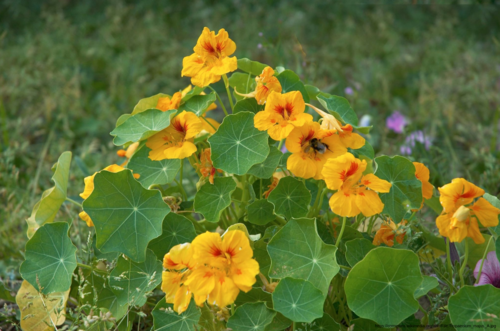
Diese Webseite gibt einen Überblick über die aktuellen und abgeschlossenen Genomsequenzierungsprojekte unserer Gruppe. Wir verwenden die Nanopore-Sequenziertechnologie von Oxford Nanopore Technologies (ONT). Dabei wird ein einzelnes DNA-Molekül (oder RNA-Molekül) durch ein Protein gezogen, das sich in einer synthetischen Membran befindet. Während ein DNA-Einzelstrang in diesem Protein steckt, blockiert er in spezifischer Weise die Bewegung von kleinen geladenen Teilchen (Ionen) durch dieses Protein. Dadurch entsteht ein elektrisches Signal, das gemessen werden kann. Dieses Signal wird später in Sequenz umgewandelt, weil jede Kombination von Basen der DNA ein ganz spezifisches elektrisches Signal erzeugt. Weitere Details zu dieser Sequenziertechnologie und ihren Möglichkeiten haben wir kürzlich in einem Review-Artikel beschrieben (Pucker et al., 2022). Wir verwenden für die Sequenzierung MinIONs, wobei es sich um kleine portable Sequenzierer handelt. Studierende können im Rahmen von verschiedenen Kursen an Genomsequenzierungsprojekten arbeiten und dadurch Erfahrungen mit dieser Sequenziertechnologie sammeln.
Ein Abschluss dieser Genomsequenzierungsprojekte und eine damit einhergehende Publikation der Genomsequenz und aller zugehöriger Daten dauert leider oft einige Monate. Grundsätzlich veröffentlichen wir alle Daten in den entsprechenden Repositorien (z.B. ENA) und stellen auch alle Methoden frei zur Verfügung (z.B. Scripte via GitHub). Bei Interesse an den laufenden Projekten, freuen wir uns über eine Kontaktaufnahme per Email. In den meisten Fällen dürfte ein Zugang zu der Genomsequenz bereits vor der Veröffentlichung möglich sein.
Generell sind wir an Kooperationen zur Sequenzierung weiterer Pflanzengenome interessiert. Allerdings wird unsere Forschung sehr stark durch das Nagoya-Protokoll eingeschränkt. Daher müssen wir unsere Aktivitäten auf Arten beschränken, die in Deutschland heimisch sind und daher hier gesammelt werden können. Arten aus dem Ausland müssten vor 2014 bereits in Deutschland gewesen sein (z.B. in Botanischen Gärten) und wir benötigen Dokumente, die dies klar belegen. Es gibt einzelne Herkunftsländer, die ihre genetischen Resourcen international zur freien Verfügung stellen (z.B. Deutschland), sodass Pflanzen aus diesen Ländern verwendet werden könnten. Projekte mit Pflanzen, die vom Nagoya-Protokoll betroffen sind, müssen wir leider grundsätzlich ablehnen.

Ceratophyllum submersum (soft hornwort) is an aquatic plant that is very common in (eutrophic) ponds in Germany. We analyzed the plastome (subgenome of the chloroplast) of this species to determine its relationship to other plant species (Meckoni et al., 2023).

Digitalis purpurea (floxglove) is known as a medicinal plant, but also appears frequently as horticultural plant in gardens due to its colorfull and large flowers. We are interested in the flavonoid biosynthesis of this plant species with a particular focus on anthocyanins which are responsible for the redish pigmentation and also the name of the species. Read about the details in our Preprint on bioRxiv (Wolff, Friedhoff, Horz et al., 2024).

Tropaeolum majus is well known for the high content of medicinal compounds. We sequenced the genome and screened the annotated gene set for players of the flavonoid biosynthesis (Friedhoff et al., 2024).

Victoria cruziana (giant water lily) is the biggest attraction in the Botanical Garden in Braunschweig. The plant is famous for huge floating leaves that can carry the weight of a small child. It produces beautiful flowers that open at night. We are interested to understand the flavonoid biosynthesis in this aquatic plant species. A first publication about the genome sequence and the flower color chnage of this species is available on bioRxiv (Nowak, Harder, Meckoni et al., 2024). [Details]

Urtica dioica (stinging nettle) was the medicinal plant of the year in 2022. It is well known for a high flavonoid content and often used to produce tea.

Aquilegia vulgaris (common columbine) is a horticultural plant that can be seen in many gardens showing a variety of flower colors. We are interested to understand the molecular basis of different flower colors.

Rubus armeniacus (blackberry) is a fruit producing plant species that is common throughout Germany. It is well known for the black and sweet fruits that it produces. We are interested to study the formation of anthocyanins, a subgroup of the flavonoids, in blackberry.